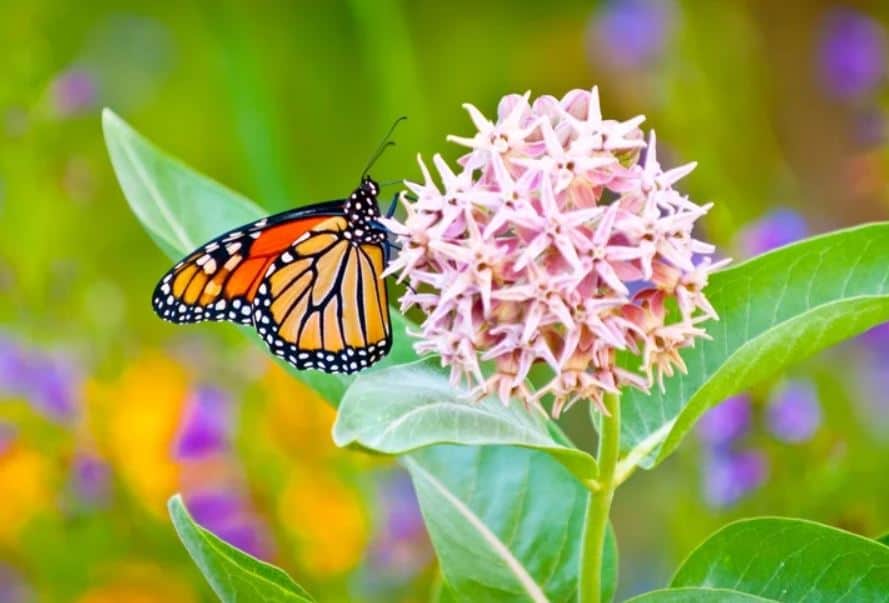Asclepias species, often known as milkweeds, are important in the monarch butterfly’s life cycle because they serve as host plants for the caterpillars. A growing number of gardeners include milkweed on their cultivation list since the plant’s populations are dwindling and the monarch is approaching the status of an endangered species. They have a choice of 15 different native milkweed species in California.

Monarch and Milkweed
Drought-resistant milkweeds can be found in almost all of California’s environments. Although California’s 15 native milkweed species are best recognized for their part in the life cycle of monarch butterflies, the colorful blooms and premium nectar also provide food and habitat for various other pollinators, including honeybees and hummingbirds.
The milky sap of milkweed gives rise to the name of the plant. It contains alkaloids, sophisticated compounds that protect milkweed from pollinators by making the plants inedible to most animals. Range animals will avoid eating these plants if anything else is available since they have such an unpleasant bitter flavor and taste.
Native California Milkweed
It might be challenging for gardeners to welcome California’s native milkweed species since many are hard to locate at garden supply shops. Native milkweed seeds from the most widespread species are simpler to obtain commercially. These include narrow-leaf milkweed, woolly pod milkweed, and showy milkweed with heart-shaped leaves.
The Xerces Society is an organization dedicated to invertebrate conservation and milkweed farming. Regarding which varieties of native California milkweed to plant in your garden, they have provided advice. Asclepias fascicularis, sometimes known as narrow-leaf milkweed, is their top pick. This popular species makes a nice milkweed for southern California and grows well in gardens across most of California.
Approximately 3 feet (91 cm) tall, narrow-leaf milkweed has pink and white blooms. It blooms from May to October, providing enough nectar for adult monarch butterflies and other helpful insects. Deadheading the plants and picking off the spent blossoms may extend this flowering season.
Milkweed for California
The Xerces Society suggests showy milkweed, Asclepias speciosa, another native milkweed plant from California. These plants stand out with heights of up to 4 or 5 feet (1–1.5 meters) and a blooming period akin to narrow-leaf milkweed. However, they will flourish in any place there is naturally damp garden soil. They often grow best where towering trees grow (think redwoods).
Beautiful milkweed blooms in dense umbels with striking light pink flowers. The fluffy, pink, and fragrant blossoms have a delightful scent. The plant forms a growing clump by the use of underground rhizomes. It may even spread quickly on healthy soil.
More than just recommending these kinds, the Xerces Society has done so. It has made steps to open up retail nurseries to the sale of both showy and narrow-leaf milkweed seeds. Additionally, it releases the California Milkweed Guide, which has a directory of nurseries selling the seeds.


